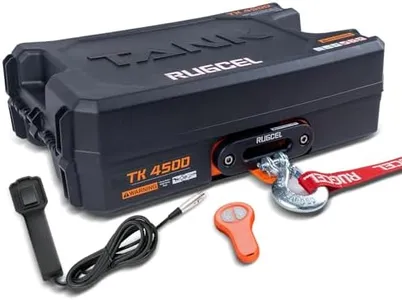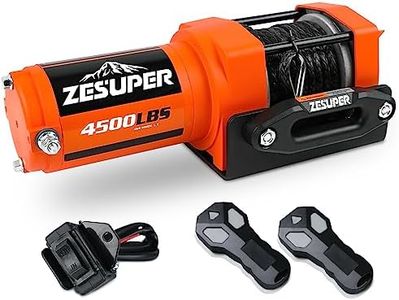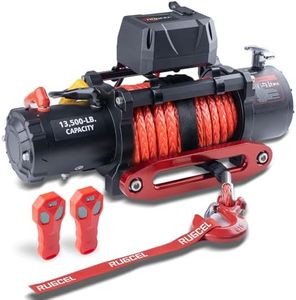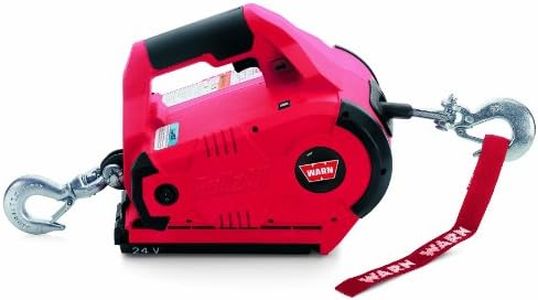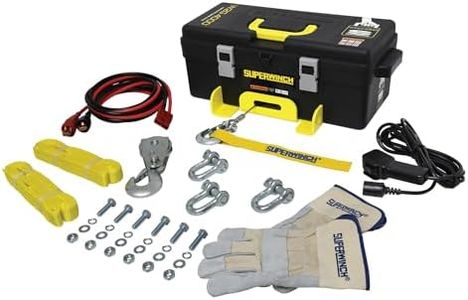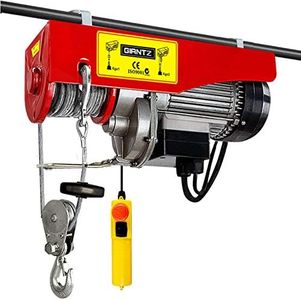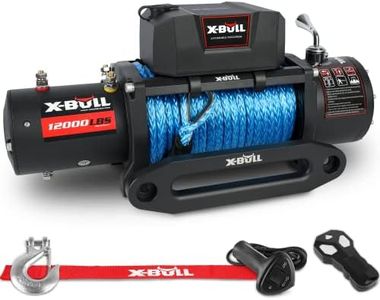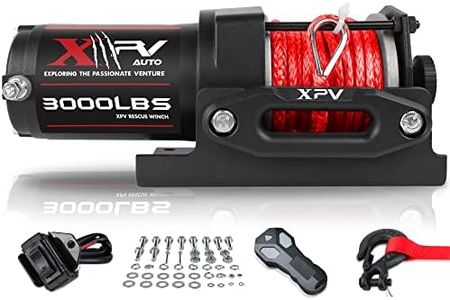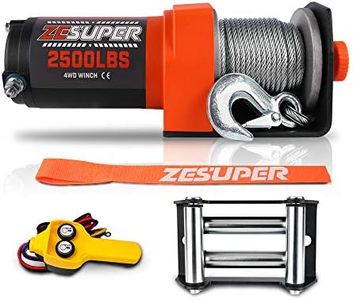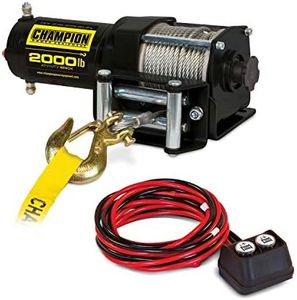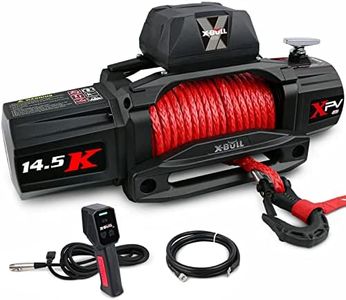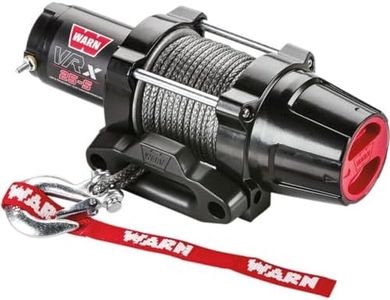We Use CookiesWe use cookies to enhance the security, performance,
functionality and for analytical and promotional activities. By continuing to browse this site you
are agreeing to our privacy policy
10 Best Electric Winches
From leading brands and best sellers available on the web.Buying Guide for the Best Electric Winches
Choosing the right electric winch is all about matching the equipment to your intended use, whether it’s for off-roading, boat trailers, or industrial lifting. Think about the kind of loads you’ll be pulling, how often you’ll use the winch, and where you plan to use it. Taking the time to understand the main specifications will help you make a purchase that’s reliable, safe, and suitable for your needs.Pulling Capacity (Rated Line Pull)Pulling capacity, often called rated line pull, tells you the maximum weight the winch can safely pull. This is one of the most important specs because if your winch’s capacity is too low, it won’t be able to handle tough jobs. Pulling capacity is usually measured in pounds or kilograms. Light-duty winches are often rated up to about 2,000 lbs, suitable for ATV or light trailer use. Medium-duty winches, rated between 2,000 and 5,000 lbs, work well for small vehicles and moderate tasks. Heavy-duty winches start at 8,000 lbs and go up from there, making them ideal for trucks and demanding recovery scenarios. To decide what you need, think about the heaviest object you’ll be moving and add a safety margin—often 1.5 times more than the weight you expect to pull.
Motor PowerThe motor power of an electric winch tells you how strong and fast the engine inside the winch is, usually measured in horsepower (HP) or watts. Higher motor power means the winch can pull heavier loads more quickly, but it may also use more electricity. Entry-level winches might have motors under 1 HP, suitable for light tasks and occasional use. Standard winches for regular vehicle recovery often have motors in the 1 to 2 HP range, offering a good balance of power and efficiency. Heavy-duty models can have motors above 2 HP for quicker, more demanding work. Base your decision on how heavy and frequent your tasks will be—regular and heavy-duty users should opt for more powerful motors.
Line Length and MaterialThe winch line, or cable, comes in different lengths and materials. Longer lines, usually up to 100 feet, give more flexibility for distant anchor points, while shorter lines reduce weight and are easier to manage. Line materials are mainly steel cable or synthetic rope. Steel cables are strong and durable but can rust or fray if not cared for, while synthetic ropes are lighter and easier to handle but may wear faster and require more maintenance. For general use, a 40-60 foot line is plenty, while extreme situations may benefit from longer ropes. Choose steel if you need toughness and low cost, or synthetic if you value lightness and safety.
Winch Control TypeWinch control refers to how you operate the winch, either using a wired remote, wireless remote, or manual switch. Wired remotes are reliable and simple, but require you to stay close to the winch. Wireless remotes give more freedom to move around for better visibility and safety, although they can sometimes be affected by battery issues or signal interference. Manual switches are basic and built-in, often used for very simple set-ups. Consider where you'll use your winch and how much mobility you need—a wireless remote is great for tricky recoveries, but for most straightforward tasks, a wired control works well.
Mounting TypeThe mounting type describes how and where the winch attaches to your vehicle or equipment. There are fixed mounts (bolted onto a bumper or frame), portable mounts (using a hitch receiver or plate), and specialty mounts for trailers or boats. Fixed mounts are the most secure for frequent use, while portable mounts offer flexibility if you need to use the winch in different places. Choose the mounting style that matches where and how you will most often use your winch, making sure it fits your vehicle or trailer’s structure.
Line SpeedLine speed measures how fast the cable winds in or out, usually listed as feet per minute. Faster line speeds save time during recovery or lifting, but might reduce pulling power under maximum load. Slow speeds offer more control but can be frustrating for longer pulls. Light-duty and hobby winches are usually slower, while mid- and heavy-duty winches balance speed and strength. Your choice should depend on how you plan to use the winch—extensive or professional users often benefit from higher line speeds, while occasional users may not need the fastest option.
